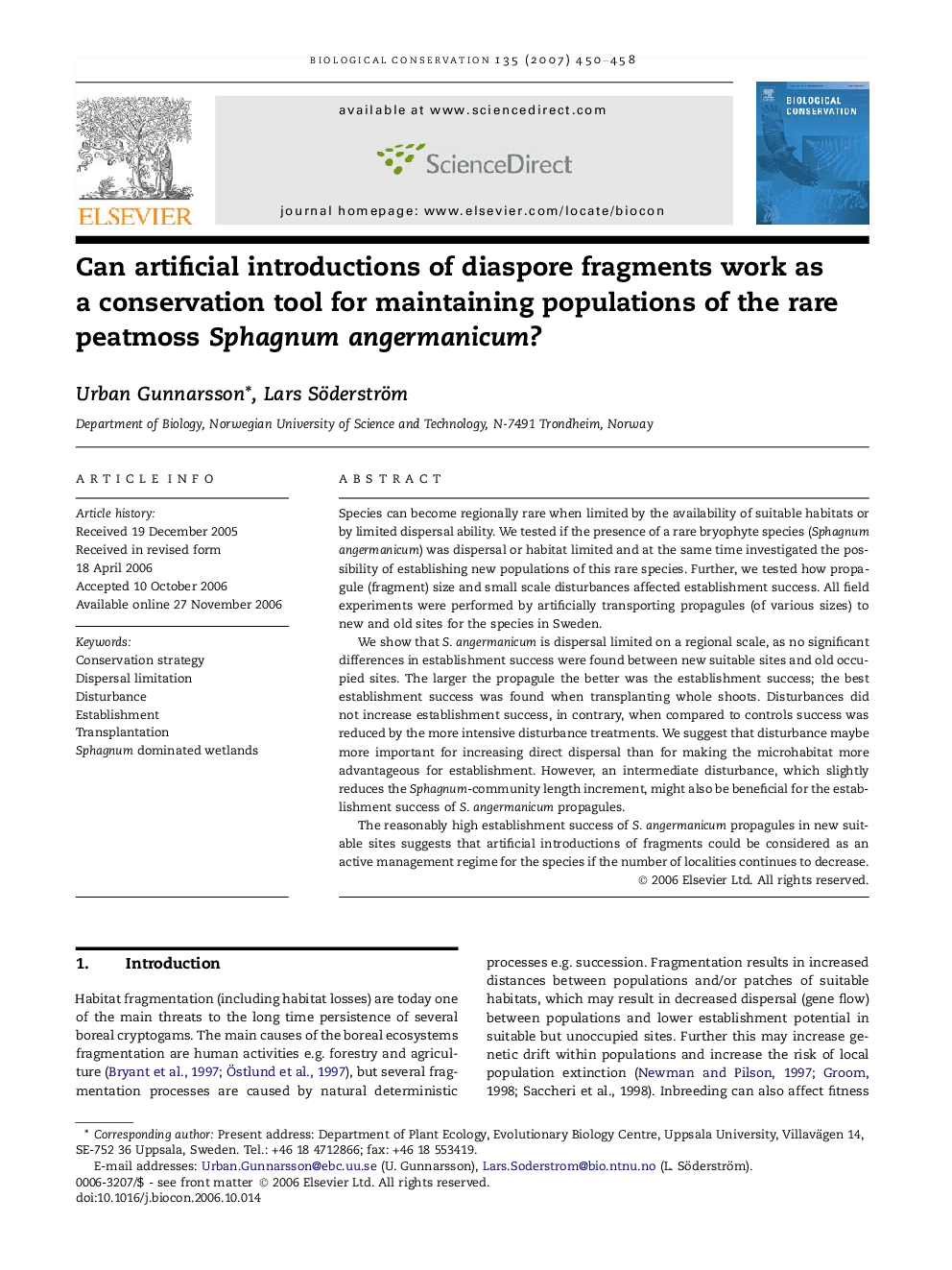| Article ID | Journal | Published Year | Pages | File Type |
|---|---|---|---|---|
| 4387239 | Biological Conservation | 2007 | 9 Pages |
Species can become regionally rare when limited by the availability of suitable habitats or by limited dispersal ability. We tested if the presence of a rare bryophyte species (Sphagnum angermanicum) was dispersal or habitat limited and at the same time investigated the possibility of establishing new populations of this rare species. Further, we tested how propagule (fragment) size and small scale disturbances affected establishment success. All field experiments were performed by artificially transporting propagules (of various sizes) to new and old sites for the species in Sweden.We show that S. angermanicum is dispersal limited on a regional scale, as no significant differences in establishment success were found between new suitable sites and old occupied sites. The larger the propagule the better was the establishment success; the best establishment success was found when transplanting whole shoots. Disturbances did not increase establishment success, in contrary, when compared to controls success was reduced by the more intensive disturbance treatments. We suggest that disturbance maybe more important for increasing direct dispersal than for making the microhabitat more advantageous for establishment. However, an intermediate disturbance, which slightly reduces the Sphagnum-community length increment, might also be beneficial for the establishment success of S. angermanicum propagules.The reasonably high establishment success of S. angermanicum propagules in new suitable sites suggests that artificial introductions of fragments could be considered as an active management regime for the species if the number of localities continues to decrease.
